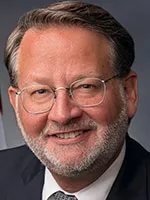Senior Reporter
Senators Tout FCC’s 5.9 GHz Spectrum Waiver

[Stay on top of transportation news: Get TTNews in your inbox.]
U.S. Senate Transportation leaders touted the Federal Communications Commission’s recent decision to open access to a band of the transportation spectrum.
Sens. Gary Peters (D-Mich.) and Cynthia Lummis (R-Wyo.) had called on the agency to connect stakeholders with access to the spectrum, which was set aside for safety operations for transportation entities.
“Connected vehicle technology has the ability to save lives. I applaud the FCC for heeding our bipartisan call to enable the deployment of this vital technology and encourage the swift approval of remaining waivers,” Peters said in a statement on April 25.
“The future of mobility is connected as well as autonomous and through investments in these lifesaving technologies we can improve roadway safety, lead the way in auto innovation and outcompete anyone on the global stage, while bolstering our economy,” added the senator, who serves as chairman of the Surface Transportation, Maritime, Freight and Ports Subcommittee.
“I’m thrilled the FCC approved the deployment of this technology that will make roads safer,” Lummis emphasized, adding, “It’s now time for the FCC to approve the remaining waivers so this lifesaving technology will have a wider reach.”
The senator is a member of the panels with jurisdiction over freight and surface transportation policies.

Peters
Earlier this year, Peters and Lummis had pressed the FCC to grant approval of cellular vehicle-to-everything, or C-V2X, waivers. Doing so, they argued in a letter to the agency, would lead to the deployment of lifesaving mobility technology, as well as help to position the country as a leader in the technology’s development and deployment.
Last year, House Transportation policymakers had urged the FCC to open access to the band of communications spectrum. Among the lawmakers at the time was current Transportation and Infrastructure Committee Chairman Sam Graves (R-Mo.).

Lummis
The request for the waiver came from stakeholders that included transportation agencies, automakers and academia. Also celebrating the agency’s recent move was the Intelligent Transportation Society of America.
“The approval of this waiver is the first step to fully utilizing this lifesaving innovation and news we have long been waiting to hear. As deaths on our nation’s roadways continue to soar, it is critical that we maximize use of connected vehicle technology to keep all road users safe,” ITS America president and CEO Laura Chace said shortly after the agency’s announcement.
She continued with her statement, “This is a crucial first step toward deploying lifesaving communications technology that will augment thousands of miles of hard infrastructure on our nation’s roadways, beginning immediately.”
The FCC, in its decision adopted on April 24, explained aspects of the waiver, noting, “The Joint Waiver Request seeks a waiver of the current Dedicated Short-Range Communication-based rules to allow for the use of Cellular Vehicle-to-Everything technology in the upper 30 megahertz of the 5.9 GHz band prior to adoption of final C-V2X-based rules.”
Want more news? Listen to today's daily briefing above or go here for more info
“The C-V2X equipment subject to the Joint Waiver Request would operate in the 5905-5925 MHz portion of the 5.9 GHz band using a 20-megahertz channel,” per the agency.
The waiver request before the FCC for C-V2X technology was pursued by Audi, the Ford Motor Co., the Virginia and Utah transportation departments, and Panasonic, among other stakeholders.
In 2020, the FCC agreed to reassign an aspect of the 5.9 GHz transportation safety spectrum to allow unlicensed Wi-Fi content providers to promote wireless access. The agency’s action freed the lower 45 megahertz portion of the 5.9 GHz band for unlicensed content. The FCC explained it was acting to address demand for Wi-Fi.
The transportation safety band was dedicated more than two decades ago for advancing autonomous vehicle technologies, and other communication features.

